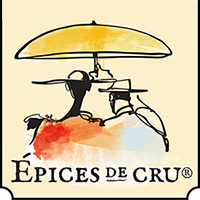- Login

Called Indian thyme, this anise-like seed adds a vegetal, herbal crunch to Ethiopian, Middle Eastern, and Indian cooking.
An exceptional product, harvested from an equally exceptional terroir! Ethiopian adjwain’s seeds are smaller, stronger, complex, and more intense than their Indian counterpart.
Jamaica has produced the best for millennia. Packed with essential oils that recall nutmeg, pepper, cinnamon and clove. You only need a few!
Infuse any dish with an authentic Creole flavor simply by adding a leaf of allspice, just as you would a Bay leaf.
India’s secret souring agent. Made from dried green mangoes, amchoor adds balance and zest where acidity is needed.
A most intriguing plant, confoundingly sweet and bitter, yet vegetal and musky, much like celery.
A Persian cooking essential, Angelica seeds are worth discovering. With an unmistakable aroma, perfect for beans, vegetables, even pickling.
This spice contains powerful aromatics and is best used toasted or sparingly. Whole anise seeds impart a wide range of herbal notes.
A mild spice used mostly for coloring. Used in West-Indian, Peruvian and Mexican dishes.
Gluten-free asafoetida. Indispensible in Indian cookery, especially with pulses. This gum lends a roasted garlic flavor to simmered dishes.
Common to central Mexican cookery, avocado leaves are used in slow-cooked dishes like bean dishes, braised meats, moles and tamales.
These young spring buds promise exceptional fruity flavor. For use in desserts, small game, or as an herbal infusion. Harvested in Quebec.
A sweet, resinous spice, wild-harvested by hand. The leaves can be infused as an herbal tea or use in cooking.
The West-Indian bay leaf has a rich and pungent fragrance. Distinct from the Mediterranean bay leaf.
The best bay leaves that Turkey has to offer! The most recent, flavorful, fragrant harvest.